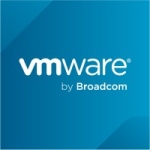What is our primary use case?
Primary use case is for automatic deployment of VMware guests.
It's performing as we want. We're not really asking anything too complex of it, but it does what we ask of it.
How has it helped my organization?
Our organization started to move a lot more towards automating all the things that we can. We're catching up to that, but we're definitely heading in that direction. It's one of those things that enables us to tie in with our other pieces, with automating the operating system, etc. VMware is then able to automate the build of our virtual machines.
In terms of infrastructure agility, we're still getting our feet under us in some areas, but it's definitely playing it's part and doing what it does well.
Our speed of provisioning has also improved. We used to build systems manually, which would take four hours or a day. Nowadays we're able to spin something up off a template that we update every so often and it takes about 20 minutes. We can take an existing template, build it back up, add some configuration for it, specific applications, turning things into what the developers need, and then we can have them deploy it off that. It makes it so that we can have customization within a framework.
What is most valuable?
The most valuable feature is the integration with some of our other automation platforms. We're starting into Jenkins, and it has a plug-in for other automation of operating systems and things. So it works together with our infrastructure. We don't have a very complex environment, we don't have NSX yet or anything really crazy, but all the things we do have, it has been able to interoperate with them.
It is intuitive and user-friendly. It took some growing. We had to figure it out in the beginning, but that was a couple versions ago. We like the improvements that have been made over time, so it's definitely been able to progress with the environment.
What needs improvement?
We don't have too complex of an environment, we're not doing machine-learning or any of the advanced features all that much. We're a pretty straightforward IT shop. We just provide servers, and then, from there, it's what the customer wants. The next step we would probably like to see is to have a customer portal, so instead of our having to punch the button, the customer could. But I believe that VMware offers enough that setting that up is more on us, rather than waiting for them offer it.
We needto learn more, advance our usage of the product. We're doing what we can with what we have, but we have to learn a bit more. Better training, or training modules, wouldn't hurt. I haven't personally looked through what the portal has, but more training is always good, so we could take a new employee and point him to the training and get him up to speed quickly. I have had 10 years or so experience with VMware, but I'm the old the guy in the department. Everybody else is newer than me on this and not everyone has my experience. So the training would be nice.
For how long have I used the solution?
Three to five years.
What do I think about the stability of the solution?
I've been impressed with the stability so far. It does what we ask it to. That's always nice. You don't have to think about it. We haven't had any downtime.
What do I think about the scalability of the solution?
We can scale it up or down. We haven't needed to yet, but we can.
How are customer service and technical support?
We haven't had to use technical support. I do a lot of blog reading, so I look up my answers on my own. But tech support, on other issues, has been where we need it to be.
Which solution did I use previously and why did I switch?
We weren't using much. This was right at the beginning of when we were starting to automate things. We saw the VMware automation and decided that, since we had VMware, it would be the logical choice. And then we started with Jenkins for a lot of our other operating system features. Jenkins, of course, has plugins that talk to VMware natively, so it was a natural fit.
When selecting a vendor, the biggest thing for us is multi-operating system support. There is the classic divide. I'm on the Windows side. We have a Linux department also. When looking at different tools, something might be better for Linux but we have to have something that will work for both of us. We don't want to have two different tools for two operating systems. Whereas the Linux team wanted to use Puppet instead of Chef, Chef supports Windows and Linux both, better. The nice thing about VMware, aside from it being a lot more OS-agnostic, is that both teams can use the product. One product for both operating systems. That was one of the primary things. We could have a tool that runs great, but it might be a situation where, "Oh yeah, your Windows support is lame." That's the big thing for us, the interoperability between operating systems.
How was the initial setup?
I thought the initial setup was straightforward. The biggest thing, once we had it set up, was to integrate it with the vCenter, but that was pretty straightforward. That was part of the workflow. It is automated within the product as part of the initial deployment, which is really handy.
The upgrade experience was also quite easy.
What's my experience with pricing, setup cost, and licensing?
Better pricing is always handy, but I feel it's at the right price point.
Which other solutions did I evaluate?
There were not too many on our list. VMware was the natural fit. We saw the automation. We liked it. Chef, technically, will do automation. It has connections into VMware. We preferred having the VMware automation handle it. Chef will do it, but it doesn't have as many things. We would have had to write a lot more tools for it. It's one of those things where, instead of Chef's being the one tool to rule them all, where we do that for everything, we branched out to VMware automation to handle its subset.
Jenkins is a Swiss Army knife. It will do literally everything. The problem is that you have to tell it to do everything. You have to build all of the features into it that you want. There's a language to do it, but it just says, "here's the entire toolbox, do whatever you want." It doesn't have as many pre-packaged things. VMware has the ability to build things, but it has a lot of things preconceived, which is very handy. If I just need the basics, I need to stand up some VMs, it already has those workflows built in. Jenkins doesn't have nearly as many things built in. They can both expand to what we need, but VMware had some pre-provided things that were very handy to get off the ground quickly.
What other advice do I have?
vRA has a very nice toolset for being able to integrate with VMware. It is great for being able to automate things within the VMware environment. We probably need to learn more about it, so we can fully realize its use, what the plugins for other things are. But it's doing everything that we need for now. We've seen that it has room to grow with us.
Disclosure: My company does not have a business relationship with this vendor other than being a customer.
















